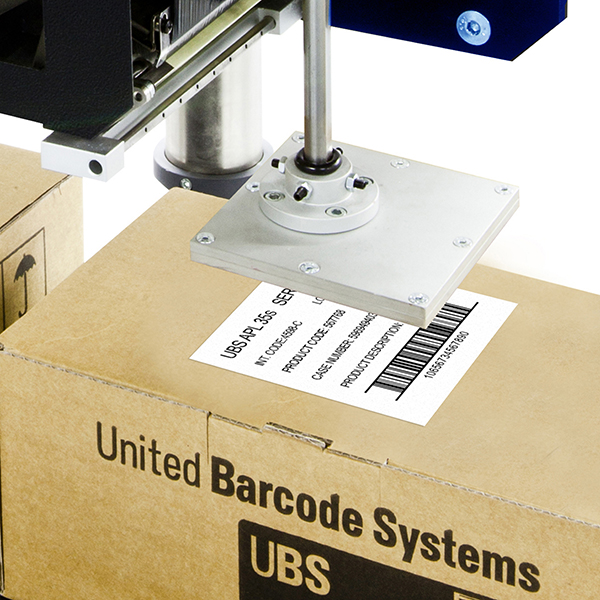All consumer products must be labeled. The label contains the necessary information for the item to complete its journey through the supply chain; compulsory information according to international regulations and to the legislation of each country, depending on the productive sector to which it belongs. It can also contain the information that the manufacturer considers interesting to add.
Labels can be grouped into four categories:
- Informative: they contain the necessary information for the consumer and the information required by law.
- Promotional: they aim to capture attention through eye-catching designs and messages.
- For brand identification.
-
Grade: they identify the quality of the product according to a regulated classification. For example, those of energy efficiency that household appliances carry.
What characteristics does a label have?
The possibilities of labeling, coding and marking commercial products are endless, in terms of design, formats, materials and procedures for printing.
The label is a fundamental element; therefore, choosing the printing solution is also a key point. It must adapt to the characteristics of each item and be easily integrable in the production line.
Food product labeling
Any packaged product intended for human consumption is regulated by strict hygiene and health regulations. The labeling must include detailed information on its characteristics, conservation and nutritional properties.
The mandatory information on all packaging must include:
- The legal name of the food.
- The list of ingredients, except for products that come from a single ingredient.
- Allergens.
- Duration or expiration date.
- Conservation and / or use conditions.
- Contact information of the food company.
- Place of origin.
- How to use.
- Volume of alcohol (in drinks with more than 1.2%).
- Nutritional information.
Pharmaceutical labeling
The pharmaceutical products market is subject to exhaustive international regulations to guarantee its good use. In February 2019, the entry into force of the European Directive on counterfeit medicines added new obstacles to fraudulent trade through the mandatory incorporation of a unique Datamatrix code on packaging.
The new labeling system allows knowing the complete traceability of the medicine, from its production to its arrival at the pharmacy. The Datamatrix code provides information about the laboratory where the product was made, the lot number, the expiration date, distributors, intermediaries, and point of sale.
In the fight against counterfeiting, which pose a serious threat to public health, all actors in the supply chain participate, and must exchange information on each transaction.
It is obvious, therefore, the great importance of using a labeling system that provides the highest quality in coding and that guarantees traceability, meeting the high demands of the production lines of pharmaceutical articles.
Chemical labeling
The EU REACH Compliance, regarding the registration, evaluation, authorization and restriction of chemical substances and preparations, requires manufacturers and importers to report on the physiochemical properties, and the effects on the environment and health, of their products.
The CLP Regulation, on classification, labeling and packaging of substances and mixtures, applies in the European Union the international criteria of the Globally Harmonized System of Classification and Labeling of Chemical Products (GHS).
The labels of these products must contain specific information, including:
- Supplier contact details.
- Amount of the substance or mixture contained in the container.
- Product identifier, which must be the same one that appears on the Safety Data Sheet.
- Two-color hazard pictograms (red and black).
- Signal words (danger to attention).
- Hazard indicators, when the substance or mixture is classified as dangerous.
- Precautionary statements.
- Supplementary information on physical properties, health effects, or particular packaging rules.
The CLP Regulation also establishes the physical characteristics of the labels: their dimensions depending on the capacity of the container, and the disposition and size of each element.
International GS1 standards
The elements that intervene in the supply chain are identified with a unique code assigned by the GS1 standard. Each company adhered to the identification system has a prefix, after which the number corresponding to each product or service (GTIN, Global Trade Item Number) is added. The complete identifier is printed next to the barcode or through an EPC radio frequency identification (RFID) tag.
UBS printing solutions
At UBS we have printing equipment to respond to the labeling, coding and marking needs of any production line. Our Thermal Inkjet TJX Series, with water based or UVLED ink, cover all possibilities in primary products.
For direct marking on the substrate of secondary products, we have the high-resolution inkjet printers APLINK MRX and APLINK LCX, with oil-based or UVLED inks, and the MRX Bicolor, which prints in two colors simultaneously and it is specially designed to comply with the requirements of the CLP Regulation. For printing and applying labels on boxes, the APL 35s offer the best performance.
APLINK MRX
APLINK LCX
APLINK MRX UVLED
APLINK MRX Bicolor

APL 35s
Finally, our pallet label printing and application equipment, APL 38s, APL 8000 Series and APL 8000 ELV Series, are designed and manufactured to meet the highest demands at the end of the production line.
APL 38s
APL 8000 Series
APL 8000 ELV Series
Among the great advantages of UBS machines, is the ease of integration in any industrial environment. Plus, with our UBS Designer and UBS LabMan software, label design and system management are simple and intuitive.
We invite you to consult with us about your specific labeling needs

